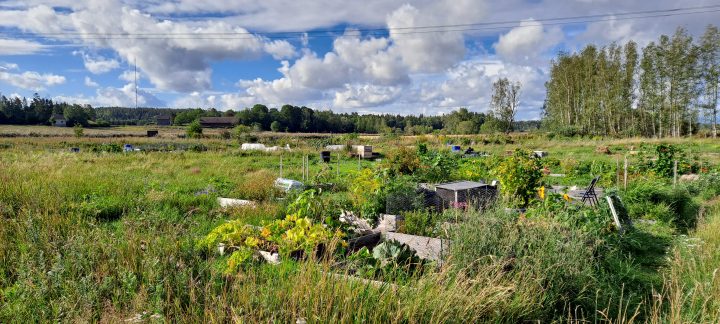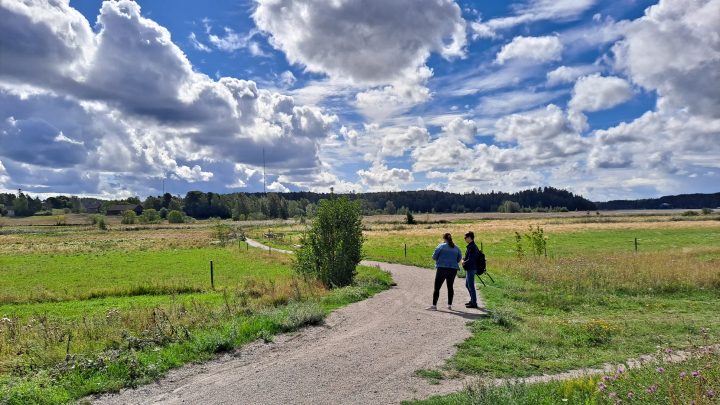In the landscapes of Rauvolanlahti, the user preferences of the area and the challenges of the place are explored
Currently, we are conducting a survey in Rauvolanlahti in order to find out the ways of using the area and the places that visitors like. Rauvolanlahti is a versatile area and there are good opportunities for recreational use. Its nature is quite diverse as it offers, in addition to an old forest area, fields, wasteland and coastal reed bed. In addition, micro farming offered by the city are popular and people come from far away to enjoy the care of the plants. These small farming plots are also places for meetings and information is exchanged among farmers. Rauvolanlahti is located between Katariinanlaakso and Vaaronniemi, which are also popular camping spots.
The survey is related to the EU-funded RESIST project, in which Finland is involved with the pilot area Rauvolanlahti. The project aims to promote regional adaptation to climate change and the resulting drought, floods, soil erosion as well as nutrient leaching.
During the survet, we research assistants go for a walk in the target area and ask the users of the area if they are willing to participate in the survey. We use tablets and the Maptionnaire platform. The results of the survey can influence the future measures that will be implemented in water management. The effects of climate change will intensify so that the drought as well as the area’s wetness will increase. The preparedness measures aim at curbing extreme weather phenomena.
Most of the people are willing to answer in case they have some time available. Those who live in the area have practical experience and knowledge that can help in planning and implementing suitable solutions for the area.
Making a survey can be considered as applied research. It is still not all obious what can be gleaned from the answers. I am especially interested in the different kind stormwater systems cities have and whether particularly effective solutions have been found in some places.
So, we don’t yet know what kind of natural solutions for stormwater systems will be implemented in Rauvolanlahti. What is certain, however, is that climate change preparedness will be anticipated in the Rauvolanlahti area. In the future, it will be clear whether a small-scale series of wetlands or underground stormwater pipes would be the solution to the challenges. With the increase in extreme weather events, it is important to smooth out spikes caused by drought and heat, snow and ice sawing from solid to liquid, or heavy rains causing floods. Rauvolanlahti is connected to the sea, so it is important to slow down nutrients in order to prevent the nutrient load of the water body. In addition, soil erosion is a big challenge in Rauvolanlahti.
The RESIST project is a five-year project and you can get to know it here: https://resist-project.eu/ . On the pages, you can familiarize yourself with the challenges of other countries and the solution models that will be or have already been implemented. A total of 13 European countries and 56 partners are involved in the project.

